MaryAnn Bernal's Blog, page 149
September 18, 2015
Star charts reveal how ancient Egyptians planned to navigate the sky after death
Ancient Origins
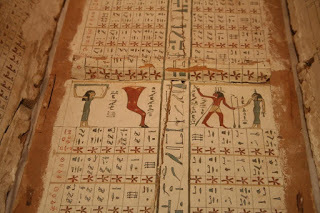 Star charts reveal how ancient Egyptians planned to navigate the sky after death Like others in the ancient world in the Americas, Asia, Europe and around the Mediterranean, Egyptian pharaohs and nobles associated stars with their gods or thought they could be deified by becoming immortal stars in the night sky. They tried to ensure their ascension and navigation of the night skies by having elaborate star charts and calendars painted in their tombs. They also had eyes painted on their coffins so they could see what was going on in the world.
Star charts reveal how ancient Egyptians planned to navigate the sky after death Like others in the ancient world in the Americas, Asia, Europe and around the Mediterranean, Egyptian pharaohs and nobles associated stars with their gods or thought they could be deified by becoming immortal stars in the night sky. They tried to ensure their ascension and navigation of the night skies by having elaborate star charts and calendars painted in their tombs. They also had eyes painted on their coffins so they could see what was going on in the world.Sarah Symons, a researcher from McMaster University in Ontario, Canada, says she believes the stars painted on the outsides of coffins were like a map for the dead to navigate the night skies. Scholars previously thought they were like clocks for keeping time, which would have been important for certain rituals, says Scientific American in an article about Symons’ research.
The article states:
“Her conclusions are based on years of research into ancient Egyptian beliefs, extensive surveys of the 27 known star tables or fragments of tables in the world and, using planetarium software, the ability to easily recreate the nighttime sky as it appeared more than 4000-odd years ago along the Nile. Symons and co-author Elizabeth Tasker of Hokkaido University in Japan describe the work in the October issue of Scientific American.”The star charts’ layout has been understood for decades, Symons and Tasker write. The ancient astronomers’ paintings on some of the tombs divided a table into quarters with a vertical and a horizontal stripe. Along the horizontal stripe is a line invoking a number of Egyptian gods with an offering. Along the vertical stripe they painted images of four of the gods.
The Scientific American article examines the star table of Idy of Asyut, which has one of the best-preserved star tables. It is housed at the University of Tübingen Museum in Germany.
 The sky goddess Nut in an ancient Egyptian star chart that differs from the one studied by Sarah Symons and Elizabeth Tasker. (Photo by GoldenMeadows /
Wikimedia Commons
)Across the top of the table is printed the civil Egyptian calendar of 10-day weeks and 12 months of 30 days, for a total of 360 days. They painted on the “half week” of five odd days at the year’s end in a column at the table’s end.
The sky goddess Nut in an ancient Egyptian star chart that differs from the one studied by Sarah Symons and Elizabeth Tasker. (Photo by GoldenMeadows /
Wikimedia Commons
)Across the top of the table is printed the civil Egyptian calendar of 10-day weeks and 12 months of 30 days, for a total of 360 days. They painted on the “half week” of five odd days at the year’s end in a column at the table’s end.They printed the star names in hieroglyphics in columns with 12 rows. Every cell depicts the rising or setting of a certain star over the horizon, Scientific American says.
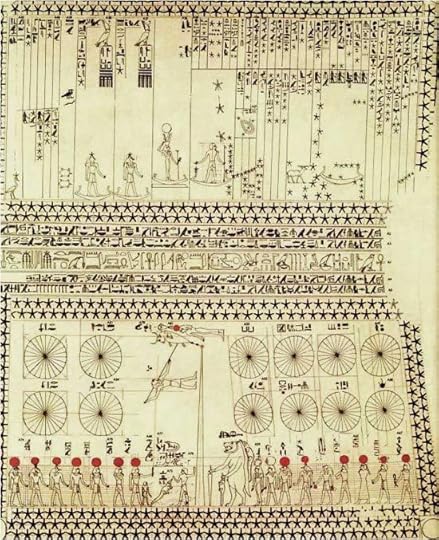 The star chart of Senemut, which differs from the one detailed in the Scientific American article. (Photo by SenemmTSR/
Wikimedia Commons
)Idy’s star chart depicts the goddesses Nut, the god Sahu and the leg of an ox, among other deities. Nut was the goddess of the sky, and she is seen holding up the heavens on the star chart. Meskhetiu, or the ox leg, shows seven stars, which scholars think represent the constellation of the Big Dipper.
The star chart of Senemut, which differs from the one detailed in the Scientific American article. (Photo by SenemmTSR/
Wikimedia Commons
)Idy’s star chart depicts the goddesses Nut, the god Sahu and the leg of an ox, among other deities. Nut was the goddess of the sky, and she is seen holding up the heavens on the star chart. Meskhetiu, or the ox leg, shows seven stars, which scholars think represent the constellation of the Big Dipper.Idy’s star chart also shows Sopdet or Sirius rising above the horizon. Sirius was absent for the sky for about 70 days in ancient Egypt. Its rise after the absence every year signaled the vitally important Nile flood.
The star table of Idy does not show all of the columns of the ideal star table. “Even partial representations were apparently powerful enough to allow the dead to access the complete chart in the afterlife,” Scientific American says.
Featured image: A detail of the star chart of Idy of Asyut showing the sky goddess Nut holding up the heavens at the top. (Photo by Einsamer Schütz / Wikimedia Commons )
By Mark Miller
Published on September 18, 2015 06:21
Would you enjoy this 4,000-year-old Hittite feast?
Ancient Origins
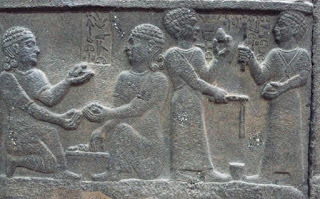 An archaeological team excavating an ancient center of the Hittite civilization in Turkey have recreated a 4,000-year-old Hittite feast including sweet breads, casseroles, grilled lamb hearts, and apricot butter, using the same techniques and methods used four millennia ago. The knowledge used to create the meal was based on information acquired from studying ancient tablets found at Alacahöyük.
An archaeological team excavating an ancient center of the Hittite civilization in Turkey have recreated a 4,000-year-old Hittite feast including sweet breads, casseroles, grilled lamb hearts, and apricot butter, using the same techniques and methods used four millennia ago. The knowledge used to create the meal was based on information acquired from studying ancient tablets found at Alacahöyük.
Alacahöyük was one of the most important centers of the ancient Hittite civilization and remains an important archaeological site. It was first occupied in the Chalcolithic Age, around 7,000 years ago, and has been continuously occupied ever since. A Sphinx Gate, along with the discovery of sun disks, bull statues, and 13 tombs of Hittite kings, reflect the significance of the site.
Aykut Çınaroğlu, the head of the excavations at Alacahöyük and professor of archaeology at Ankara University reported that his team had conducted research on the diet and preparation methods of the Anatolian-Hittites, dating back 4,000 years.
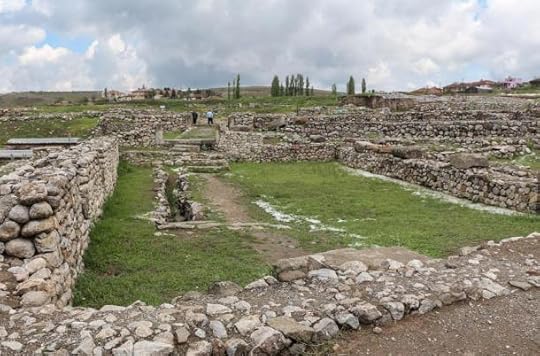 The archaeological site of Alacahöyük (
Wikipedia
)Preparing the FeastThe Daily Sabah reports that the ancient Hittite feast was cooked at Alacahöyük and was prepared using the same methods and conditions of 4,000 years ago – the only piece of kitchenware that was used was a knife, and buckwheat was ground down with a stone to make flour.
The archaeological site of Alacahöyük (
Wikipedia
)Preparing the FeastThe Daily Sabah reports that the ancient Hittite feast was cooked at Alacahöyük and was prepared using the same methods and conditions of 4,000 years ago – the only piece of kitchenware that was used was a knife, and buckwheat was ground down with a stone to make flour.
Because the Hittites used to record everything, including food recipes, a lot of information was learned about their cuisine by studying their ancient tablets. Among the records, researchers found reference to more than 100 types of pastry.
"Ancient settlers wrote that they ate cold meat, cooked onion and bread on a festival day. They did not use yeast while making bread or cook them in moist ovens. The team tried to make it with pounded wheat, not sifted flour," Chef Ömür Akkor, an excavation team member, told the Daily Sabah.
Archaeologists Find Proof that early Hittites entered Europe Archaeologists Reveal Secrets Found in Ancient War-Torn City of Karkemish, Turkey 4,000-Year-Old Tablets with Evidence of Bronze Age Rights for Women Discovered in Turkey By studying the tablets, the research team also discovered that there were incredibly strict hygiene measures in Hittite kitchens. “If a chef with a large, unmanaged beard or long, unmanaged hair cooks in the kitchen or an animal wandered into the kitchen, he or she used to receive a death penalty along with their family,” reports The Daily Sabah.
 A Hittite tablet, 14th century BC (
Wikipedia
). The excavation team were able to learn about Hittite cuisine by studying ancient tablets.The feast prepared at Alacahöyük included a sweet bread called Ninda.ku, as well as other breads made from barley, or flavoured with cheese and fig. Also on the menu was apricot butter, a selection of cold meats, a casserole of meat, olive oil, and honey, grilled lamb liver and heart, sandwiches made with cooked meat and onion, and beruwa (a name given to mashed food), with chickpea and cucumber.
A Hittite tablet, 14th century BC (
Wikipedia
). The excavation team were able to learn about Hittite cuisine by studying ancient tablets.The feast prepared at Alacahöyük included a sweet bread called Ninda.ku, as well as other breads made from barley, or flavoured with cheese and fig. Also on the menu was apricot butter, a selection of cold meats, a casserole of meat, olive oil, and honey, grilled lamb liver and heart, sandwiches made with cooked meat and onion, and beruwa (a name given to mashed food), with chickpea and cucumber.
 The 4,000-year-old Hittite feast prepared at Alacahöyü. (
Daily Sabah
)The Hittites were an ancient Anatolian people who established an empire in north-central Anatolia around 1600 BC. This empire reached its height during the mid-14th century BC when it encompassed an area that included most of Asia Minor as well as parts of the northern Levant and Upper Mesopotamia. After 1180 BC, the empire came to an end during the Bronze Age collapse, splintering into several independent "Neo-Hittite" city-states, some of which survived until the 8th century BC.
The 4,000-year-old Hittite feast prepared at Alacahöyü. (
Daily Sabah
)The Hittites were an ancient Anatolian people who established an empire in north-central Anatolia around 1600 BC. This empire reached its height during the mid-14th century BC when it encompassed an area that included most of Asia Minor as well as parts of the northern Levant and Upper Mesopotamia. After 1180 BC, the empire came to an end during the Bronze Age collapse, splintering into several independent "Neo-Hittite" city-states, some of which survived until the 8th century BC.
Featured image: Neo-Hittite Stone relief (Carcemish 8th century BC), photo by Dick Osseman.
By April Holloway
 An archaeological team excavating an ancient center of the Hittite civilization in Turkey have recreated a 4,000-year-old Hittite feast including sweet breads, casseroles, grilled lamb hearts, and apricot butter, using the same techniques and methods used four millennia ago. The knowledge used to create the meal was based on information acquired from studying ancient tablets found at Alacahöyük.
An archaeological team excavating an ancient center of the Hittite civilization in Turkey have recreated a 4,000-year-old Hittite feast including sweet breads, casseroles, grilled lamb hearts, and apricot butter, using the same techniques and methods used four millennia ago. The knowledge used to create the meal was based on information acquired from studying ancient tablets found at Alacahöyük.Alacahöyük was one of the most important centers of the ancient Hittite civilization and remains an important archaeological site. It was first occupied in the Chalcolithic Age, around 7,000 years ago, and has been continuously occupied ever since. A Sphinx Gate, along with the discovery of sun disks, bull statues, and 13 tombs of Hittite kings, reflect the significance of the site.
Aykut Çınaroğlu, the head of the excavations at Alacahöyük and professor of archaeology at Ankara University reported that his team had conducted research on the diet and preparation methods of the Anatolian-Hittites, dating back 4,000 years.
 The archaeological site of Alacahöyük (
Wikipedia
)Preparing the FeastThe Daily Sabah reports that the ancient Hittite feast was cooked at Alacahöyük and was prepared using the same methods and conditions of 4,000 years ago – the only piece of kitchenware that was used was a knife, and buckwheat was ground down with a stone to make flour.
The archaeological site of Alacahöyük (
Wikipedia
)Preparing the FeastThe Daily Sabah reports that the ancient Hittite feast was cooked at Alacahöyük and was prepared using the same methods and conditions of 4,000 years ago – the only piece of kitchenware that was used was a knife, and buckwheat was ground down with a stone to make flour.Because the Hittites used to record everything, including food recipes, a lot of information was learned about their cuisine by studying their ancient tablets. Among the records, researchers found reference to more than 100 types of pastry.
"Ancient settlers wrote that they ate cold meat, cooked onion and bread on a festival day. They did not use yeast while making bread or cook them in moist ovens. The team tried to make it with pounded wheat, not sifted flour," Chef Ömür Akkor, an excavation team member, told the Daily Sabah.
Archaeologists Find Proof that early Hittites entered Europe Archaeologists Reveal Secrets Found in Ancient War-Torn City of Karkemish, Turkey 4,000-Year-Old Tablets with Evidence of Bronze Age Rights for Women Discovered in Turkey By studying the tablets, the research team also discovered that there were incredibly strict hygiene measures in Hittite kitchens. “If a chef with a large, unmanaged beard or long, unmanaged hair cooks in the kitchen or an animal wandered into the kitchen, he or she used to receive a death penalty along with their family,” reports The Daily Sabah.
 A Hittite tablet, 14th century BC (
Wikipedia
). The excavation team were able to learn about Hittite cuisine by studying ancient tablets.The feast prepared at Alacahöyük included a sweet bread called Ninda.ku, as well as other breads made from barley, or flavoured with cheese and fig. Also on the menu was apricot butter, a selection of cold meats, a casserole of meat, olive oil, and honey, grilled lamb liver and heart, sandwiches made with cooked meat and onion, and beruwa (a name given to mashed food), with chickpea and cucumber.
A Hittite tablet, 14th century BC (
Wikipedia
). The excavation team were able to learn about Hittite cuisine by studying ancient tablets.The feast prepared at Alacahöyük included a sweet bread called Ninda.ku, as well as other breads made from barley, or flavoured with cheese and fig. Also on the menu was apricot butter, a selection of cold meats, a casserole of meat, olive oil, and honey, grilled lamb liver and heart, sandwiches made with cooked meat and onion, and beruwa (a name given to mashed food), with chickpea and cucumber. The 4,000-year-old Hittite feast prepared at Alacahöyü. (
Daily Sabah
)The Hittites were an ancient Anatolian people who established an empire in north-central Anatolia around 1600 BC. This empire reached its height during the mid-14th century BC when it encompassed an area that included most of Asia Minor as well as parts of the northern Levant and Upper Mesopotamia. After 1180 BC, the empire came to an end during the Bronze Age collapse, splintering into several independent "Neo-Hittite" city-states, some of which survived until the 8th century BC.
The 4,000-year-old Hittite feast prepared at Alacahöyü. (
Daily Sabah
)The Hittites were an ancient Anatolian people who established an empire in north-central Anatolia around 1600 BC. This empire reached its height during the mid-14th century BC when it encompassed an area that included most of Asia Minor as well as parts of the northern Levant and Upper Mesopotamia. After 1180 BC, the empire came to an end during the Bronze Age collapse, splintering into several independent "Neo-Hittite" city-states, some of which survived until the 8th century BC.Featured image: Neo-Hittite Stone relief (Carcemish 8th century BC), photo by Dick Osseman.
By April Holloway
Published on September 18, 2015 06:16
Double Medieval child burial, one Pagan, one Christian, mystifies German researchers
Ancient Origins
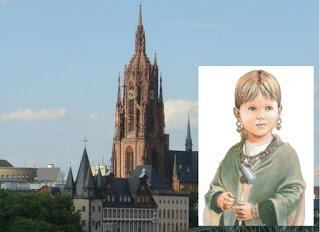 Archaeologists say the circumstances of the death and double burial of two little children who died in Medieval Frankfurt, Germany, will probably never be known. One of the children had an apparently royal Merovingian, Christian burial, and the other a pagan Scandinavian burial. The children were honored many years after their death by careful placement of a royal chapel around their grave.
Archaeologists say the circumstances of the death and double burial of two little children who died in Medieval Frankfurt, Germany, will probably never be known. One of the children had an apparently royal Merovingian, Christian burial, and the other a pagan Scandinavian burial. The children were honored many years after their death by careful placement of a royal chapel around their grave.
Their remains were found in 1992, and archaeologists are just now releasing the results of the scientific examination of the bodies and gravesite. The team announced the children were buried sometime between 700 and 730 AD. The grave is in a priest’s residence, the priory of a tiny church at what later would become the Frankfurt Cathedral in the 1300s.
 The west tower of the Frankfurt Imperial Cathedral, under which were interred two Medieval children, one with a Christian burial the other a pagan burial. (Photo by :edelecs/
Wikimedia Commons
)In 855 a palace chapel at the site built by King Louis II was aligned exactly with the grave, leading the researchers to conclude the children were honored long after their deaths. It may have been an accident of design, but the children’s graves were also aligned with the Frankfurt Cathedral, which was built in the 1200s.
The west tower of the Frankfurt Imperial Cathedral, under which were interred two Medieval children, one with a Christian burial the other a pagan burial. (Photo by :edelecs/
Wikimedia Commons
)In 855 a palace chapel at the site built by King Louis II was aligned exactly with the grave, leading the researchers to conclude the children were honored long after their deaths. It may have been an accident of design, but the children’s graves were also aligned with the Frankfurt Cathedral, which was built in the 1200s.
The research team, led by Professor Egan Wamers of the Frankfurt Archaeological Museum, published the results of their findings in the journal Schnell & Stiener. The article is in German and is behind a pay wall.
The Local, a German newspaper, reports Wamers as saying the researchers don’t know why the children were honored in this way with the burial and the later architectural consideration given their grave.
 The floor plan of the Frankfurt Cathedral, showing in dark red near the center the building where the children’s remains were buried. (Graphic by the Frankfurt Archaeological Museum)
The floor plan of the Frankfurt Cathedral, showing in dark red near the center the building where the children’s remains were buried. (Graphic by the Frankfurt Archaeological Museum)
The other child had a necklace that was a copy of a Scandinavian amulet. That and the fact that the cremated remains were mixed with bear bones show close ties between northern Europe and the Germanic tribes. These ties, The Local says, had been developing in the 7th century AD.
 While archaeologists have been excavating in Frankfurt for many years, the medieval history of the city remains a mystery. This photo, which shows the first city walls, was taken in 1906. (
Wikimedia Commons
)It is possible the two children had been promised to each other for marriage, Wamers said. But he added that researchers can only speculate about this strange burial. This is the first burial ever found in Frankfurt from before Charlemagne’s Great Synod of 794 AD. Wamers said it is unlikely the world will ever know the circumstances of the deaths and burial of the two children.
While archaeologists have been excavating in Frankfurt for many years, the medieval history of the city remains a mystery. This photo, which shows the first city walls, was taken in 1906. (
Wikimedia Commons
)It is possible the two children had been promised to each other for marriage, Wamers said. But he added that researchers can only speculate about this strange burial. This is the first burial ever found in Frankfurt from before Charlemagne’s Great Synod of 794 AD. Wamers said it is unlikely the world will ever know the circumstances of the deaths and burial of the two children.
The settlement of Franconofurd, as it was known, was important from at least the time of the Roman Empire. Frankish kings held itinerant court and built on the hilltop site, which was on an important trade route with north-south and east-west axes.
The archaeology and therefore the lives of the early medieval people of Franconofurd are wrapped in mystery. Archaeologists intend to dig around the cathedral complex where there was once a royal palace. They hope to find worked precious metal, especially from the 9th and 10th centuries.
By Mark Miller
 Archaeologists say the circumstances of the death and double burial of two little children who died in Medieval Frankfurt, Germany, will probably never be known. One of the children had an apparently royal Merovingian, Christian burial, and the other a pagan Scandinavian burial. The children were honored many years after their death by careful placement of a royal chapel around their grave.
Archaeologists say the circumstances of the death and double burial of two little children who died in Medieval Frankfurt, Germany, will probably never be known. One of the children had an apparently royal Merovingian, Christian burial, and the other a pagan Scandinavian burial. The children were honored many years after their death by careful placement of a royal chapel around their grave.Their remains were found in 1992, and archaeologists are just now releasing the results of the scientific examination of the bodies and gravesite. The team announced the children were buried sometime between 700 and 730 AD. The grave is in a priest’s residence, the priory of a tiny church at what later would become the Frankfurt Cathedral in the 1300s.
 The west tower of the Frankfurt Imperial Cathedral, under which were interred two Medieval children, one with a Christian burial the other a pagan burial. (Photo by :edelecs/
Wikimedia Commons
)In 855 a palace chapel at the site built by King Louis II was aligned exactly with the grave, leading the researchers to conclude the children were honored long after their deaths. It may have been an accident of design, but the children’s graves were also aligned with the Frankfurt Cathedral, which was built in the 1200s.
The west tower of the Frankfurt Imperial Cathedral, under which were interred two Medieval children, one with a Christian burial the other a pagan burial. (Photo by :edelecs/
Wikimedia Commons
)In 855 a palace chapel at the site built by King Louis II was aligned exactly with the grave, leading the researchers to conclude the children were honored long after their deaths. It may have been an accident of design, but the children’s graves were also aligned with the Frankfurt Cathedral, which was built in the 1200s.The research team, led by Professor Egan Wamers of the Frankfurt Archaeological Museum, published the results of their findings in the journal Schnell & Stiener. The article is in German and is behind a pay wall.
The Local, a German newspaper, reports Wamers as saying the researchers don’t know why the children were honored in this way with the burial and the later architectural consideration given their grave.
 The floor plan of the Frankfurt Cathedral, showing in dark red near the center the building where the children’s remains were buried. (Graphic by the Frankfurt Archaeological Museum)
The floor plan of the Frankfurt Cathedral, showing in dark red near the center the building where the children’s remains were buried. (Graphic by the Frankfurt Archaeological Museum)“One can assume they played a significant role in this aristocratic class in Frankfurt,” he said. “... We know of a number of these Adelsheiligen [noble saints] in the early Middle Ages. Educated, high-class people had easier access to saintly status.”The girl’s high status was clearly evident by the clothing she was dressed in, including a tunic and shawl; and jewelry for her ears, fingers, arms, neck and chest made of gold, silver, bronze and precious stones.
The other child had a necklace that was a copy of a Scandinavian amulet. That and the fact that the cremated remains were mixed with bear bones show close ties between northern Europe and the Germanic tribes. These ties, The Local says, had been developing in the 7th century AD.
 While archaeologists have been excavating in Frankfurt for many years, the medieval history of the city remains a mystery. This photo, which shows the first city walls, was taken in 1906. (
Wikimedia Commons
)It is possible the two children had been promised to each other for marriage, Wamers said. But he added that researchers can only speculate about this strange burial. This is the first burial ever found in Frankfurt from before Charlemagne’s Great Synod of 794 AD. Wamers said it is unlikely the world will ever know the circumstances of the deaths and burial of the two children.
While archaeologists have been excavating in Frankfurt for many years, the medieval history of the city remains a mystery. This photo, which shows the first city walls, was taken in 1906. (
Wikimedia Commons
)It is possible the two children had been promised to each other for marriage, Wamers said. But he added that researchers can only speculate about this strange burial. This is the first burial ever found in Frankfurt from before Charlemagne’s Great Synod of 794 AD. Wamers said it is unlikely the world will ever know the circumstances of the deaths and burial of the two children.The settlement of Franconofurd, as it was known, was important from at least the time of the Roman Empire. Frankish kings held itinerant court and built on the hilltop site, which was on an important trade route with north-south and east-west axes.
The archaeology and therefore the lives of the early medieval people of Franconofurd are wrapped in mystery. Archaeologists intend to dig around the cathedral complex where there was once a royal palace. They hope to find worked precious metal, especially from the 9th and 10th centuries.
"We have very few high-value finds, like Carolingian swords or graves of men, almost nothing in Frankfurt made of metal that could give us more information about what was going on here,” Wamers said.Featured image: Main: The west tower of the Frankfurt Imperial Cathedral, under which were interred two Medieval children, one with a Christian burial the other a pagan burial. ( Wikipedia ). Inset: An artist's impression of how the girl found buried under the cathedral might have looked. Image: Archäologisches Museum Frankfurt.
By Mark Miller
Published on September 18, 2015 06:14
History Trivia - Battle of Chrysopolis - Constantine the Great victorious
Sept 18
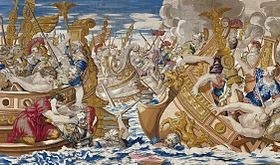
324 Constantine the Great decisively defeated Licinius in the Battle of Chrysopolis, establishing Constantine's sole control over the Roman Empire.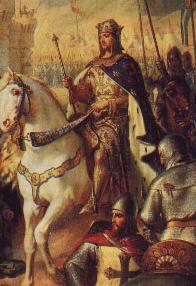
1180 Philip Augustus became king of France. Philip was one of the most successful medieval French monarchs in expanding the royal demesne and the influence of the monarchy. He broke up the great Angevin Empire (an area stretching from the Pyrenees to Ireland ruled by the Angevin Plantagenet dynasty during the 12th and early 13th centuries) and defeated a coalition of his rivals (German, Flemish and English) at the Battle of Bouvines in 1214.

324 Constantine the Great decisively defeated Licinius in the Battle of Chrysopolis, establishing Constantine's sole control over the Roman Empire.

1180 Philip Augustus became king of France. Philip was one of the most successful medieval French monarchs in expanding the royal demesne and the influence of the monarchy. He broke up the great Angevin Empire (an area stretching from the Pyrenees to Ireland ruled by the Angevin Plantagenet dynasty during the 12th and early 13th centuries) and defeated a coalition of his rivals (German, Flemish and English) at the Battle of Bouvines in 1214.
Published on September 18, 2015 01:00
September 17, 2015
History Trivia - Bonnie Prince Charlie enters Edinburgh
Sept 17
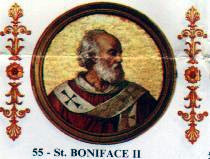
530 Boniface II was selected Pope. He was by birth an Ostrogoth, the first Germanic pope, and he owed his appointment to the influence of the Gothic king Athalaric. Boniface was chosen by his predecessor, Pope Felix IV, who had been a strong adherent of the Arian king, and was never elected. Boniface had for some time an antipope, Dioscurus, who had been elected by most of the priests of Rome. Boniface and Dioscorus were both consecrated in Rome on 22 September 530, but Dioscurus died twenty-two days later.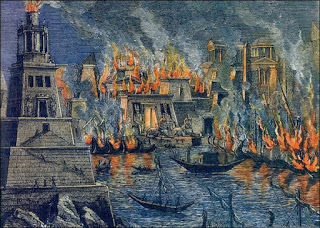
642 Arabs conquered Alexandria, destroying the library.
1745 Jacobite leader Bonnie Prince Charlie entered Edinburgh, proclaiming his father James VIII of Scotland.

530 Boniface II was selected Pope. He was by birth an Ostrogoth, the first Germanic pope, and he owed his appointment to the influence of the Gothic king Athalaric. Boniface was chosen by his predecessor, Pope Felix IV, who had been a strong adherent of the Arian king, and was never elected. Boniface had for some time an antipope, Dioscurus, who had been elected by most of the priests of Rome. Boniface and Dioscorus were both consecrated in Rome on 22 September 530, but Dioscurus died twenty-two days later.

642 Arabs conquered Alexandria, destroying the library.

1745 Jacobite leader Bonnie Prince Charlie entered Edinburgh, proclaiming his father James VIII of Scotland.
Published on September 17, 2015 01:30
September 16, 2015
History Trivia - Alexander the Great destroys Thebes
Sept 16
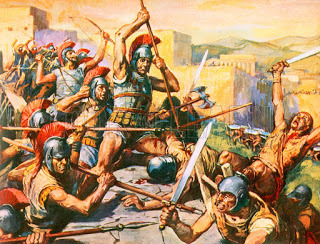
335 BC Alexander the Great destroyed every building in Thebes, Egypt, except the temples and the house of the poet Pindar.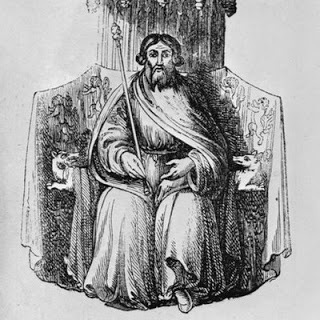
1400 Owain Glyndwr proclaimed himself Prince of Wales, launching the last Welsh rebellion against the English.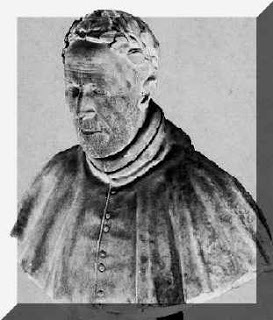
1494 Francisco Maurolico was born. He was a Benedictine monk, historian, and mathematician, Maurolico wrote a history of Sicily and significant works on Greek mathematics.

335 BC Alexander the Great destroyed every building in Thebes, Egypt, except the temples and the house of the poet Pindar.

1400 Owain Glyndwr proclaimed himself Prince of Wales, launching the last Welsh rebellion against the English.

1494 Francisco Maurolico was born. He was a Benedictine monk, historian, and mathematician, Maurolico wrote a history of Sicily and significant works on Greek mathematics.
Published on September 16, 2015 01:00
September 15, 2015
Why is a fry up breakfast called a ‘full English’?
History Extra

A traditional 'full English' breakfast (Photo by Jrv73)
The ‘full English’ breakfast – made up of sausages, bacon, eggs, tomatoes, toast and some black pudding if you’re so inclined – is a firmly established national dish.
Yet, while fried food has been eaten for centuries, the meal wasn’t adopted as ‘English’ until the 20th century.
Its name grew as the meal was increasingly seen as an alternative to decidedly healthier ‘Continental’ breakfasts of pastries and fruit juices offered to tourists in Britain.
But the English aren’t the only ones claiming the fry up. The ‘full Scottish’ includes potato scones, while the ‘full Welsh’ comes with laverbread cake and the ‘Ulster fry’ with soda bread, or there’s the Canadian ‘Lumberjack Breakfast’, complete with pancakes.
Answered by one of our Q&A experts, Emily Brand. For more fascinating questions by Emily, and the rest of our panel, pick up a copy of History Revealed! Available in print and for digital devices.

A traditional 'full English' breakfast (Photo by Jrv73)
The ‘full English’ breakfast – made up of sausages, bacon, eggs, tomatoes, toast and some black pudding if you’re so inclined – is a firmly established national dish.
Yet, while fried food has been eaten for centuries, the meal wasn’t adopted as ‘English’ until the 20th century.
Its name grew as the meal was increasingly seen as an alternative to decidedly healthier ‘Continental’ breakfasts of pastries and fruit juices offered to tourists in Britain.
But the English aren’t the only ones claiming the fry up. The ‘full Scottish’ includes potato scones, while the ‘full Welsh’ comes with laverbread cake and the ‘Ulster fry’ with soda bread, or there’s the Canadian ‘Lumberjack Breakfast’, complete with pancakes.
Answered by one of our Q&A experts, Emily Brand. For more fascinating questions by Emily, and the rest of our panel, pick up a copy of History Revealed! Available in print and for digital devices.
Published on September 15, 2015 06:19
4,000-year-old Ancient Egyptian manuscript measuring more than 8ft has been rediscovered in Cairo
Ancient Origins
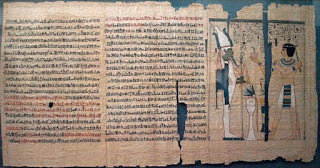 The oldest known Egyptian leather manuscript, dating back some 4,000 years, has been rediscovered at the Egyptian Museum in Cairo after it was pulled from a dusty, old storage box, where it had been lost for around 70 years. The precious text contains fine quality depictions of supernatural beings which predate the famous drawings of the Egyptian Book of the Dead.
The oldest known Egyptian leather manuscript, dating back some 4,000 years, has been rediscovered at the Egyptian Museum in Cairo after it was pulled from a dusty, old storage box, where it had been lost for around 70 years. The precious text contains fine quality depictions of supernatural beings which predate the famous drawings of the Egyptian Book of the Dead.
Discovery News reports that the manuscript measures 2.5 meters (8.2 feet) in length, making it the longest text ever found. It exceeds the next longest text by just 2 inches – an ancient pre-nuptial agreement between a couple due to be married, which sets out how the wife will be provided for, should the marriage fail.
“Taking into account that it was written on both sides, we have more than 5 meters (16.4 feet) of texts and drawings, making this the longest leather roll from ancient Egypt,” Wael Sherbiny, the Belgium-based independent scholar who made the finding, told Discovery News.
Eight foot long scroll reveals Ancient Egyptian pre-nup Ancient Egyptian Texts contain Hangover Cure and Radical Eye Disease Treatments Rediscovered Papyri Fragments Provide Charming Insight into Everyday Life in Ancient Egypt The rediscovered leather manuscript in the longest Ancient Egyptian text ever found, exceeding the length of the next longest text, an 8-foot long prenuptial agreemeent (pictured), by just 2 inches. Credit:
Oriental Institute of the University of Chicago
.The ancient text, which dates from the late Old Kingdom to the early Middle Kingdom (2300 – 2000 BC), is a religious manuscript, which contains spells that would most likely have been recited by a priest, and an illustrated composition of temple rituals that would have also been adapted for funerary use.
The rediscovered leather manuscript in the longest Ancient Egyptian text ever found, exceeding the length of the next longest text, an 8-foot long prenuptial agreemeent (pictured), by just 2 inches. Credit:
Oriental Institute of the University of Chicago
.The ancient text, which dates from the late Old Kingdom to the early Middle Kingdom (2300 – 2000 BC), is a religious manuscript, which contains spells that would most likely have been recited by a priest, and an illustrated composition of temple rituals that would have also been adapted for funerary use.
The manuscript is adorned with high-quality colorful drawings of divine and supernatural beings, illustrated around 1,000 years before similar drawings appeared in the world renowned Book of the Dead, an ancient Egyptian funerary text containing spells to aid a deceased person’s journey into the afterlife.
1,800-year-old ancient Egyptian letter reveals hopes and fears of young soldier Researchers extract Papyrus Text from Mummy Mask, revealing what might be the oldest known Gospel Book of the Dead spell 17 from the Papyrus of Ani (
Wikipedia
)Sherbiny told Discovery News that the same illustrated composition that is found in the leather manuscript is also found on the base of Middle Kingdom sarcophagi retrieved from the necropolis of Hermopolis in Upper Egypt, dating to between 2055 and 1650 BC.
Book of the Dead spell 17 from the Papyrus of Ani (
Wikipedia
)Sherbiny told Discovery News that the same illustrated composition that is found in the leather manuscript is also found on the base of Middle Kingdom sarcophagi retrieved from the necropolis of Hermopolis in Upper Egypt, dating to between 2055 and 1650 BC.
“Amazingly, the roll offers an even more detailed iconography than the Hermopolitan coffins in terms of texts and drawings,” Sherbiny said.
The composition in the manuscript predates the illustrations found at Hermopolis, suggesting that they may have had a long history of transmission before being used in the coffin decorations.
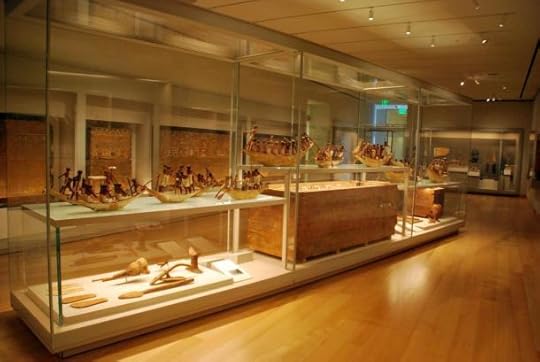 The same illustrated composition that is found in the leather manuscript is also found on the base of Middle Kingdom coffins retrieved from the necropolis of Hermopolis. Objects from the tomb of Djehutynakht, a nomarch during the Middle Kingdom era of Egypt, found in the necropolis of Hermopolis (
Wikipedia
)Ancient Egyptian leather manuscripts are extremely rare because leather quickly disintegrates over time, while papyri were well-preserved by the dry climate of Egypt. At the time, leather was considered the more prestigious writing material, and was used to record religious texts, as well as important historical events.
The same illustrated composition that is found in the leather manuscript is also found on the base of Middle Kingdom coffins retrieved from the necropolis of Hermopolis. Objects from the tomb of Djehutynakht, a nomarch during the Middle Kingdom era of Egypt, found in the necropolis of Hermopolis (
Wikipedia
)Ancient Egyptian leather manuscripts are extremely rare because leather quickly disintegrates over time, while papyri were well-preserved by the dry climate of Egypt. At the time, leather was considered the more prestigious writing material, and was used to record religious texts, as well as important historical events.
Wael Sherbiny had to piece together the leather roll, which was in tiny fragments. He is currently preparing the full publication of the contents of the ancient manuscript.
Image: The rediscovered leather manuscript has been compared to the Egyptian Book of the Dead (pictured). Book of the Dead papyrus of Pinedjem II, 21st dynasty, circa 990-969 BC. Originally from the Deir el-Bahri royal cache. ( Wikipedia )
By April Holloway
 The oldest known Egyptian leather manuscript, dating back some 4,000 years, has been rediscovered at the Egyptian Museum in Cairo after it was pulled from a dusty, old storage box, where it had been lost for around 70 years. The precious text contains fine quality depictions of supernatural beings which predate the famous drawings of the Egyptian Book of the Dead.
The oldest known Egyptian leather manuscript, dating back some 4,000 years, has been rediscovered at the Egyptian Museum in Cairo after it was pulled from a dusty, old storage box, where it had been lost for around 70 years. The precious text contains fine quality depictions of supernatural beings which predate the famous drawings of the Egyptian Book of the Dead.Discovery News reports that the manuscript measures 2.5 meters (8.2 feet) in length, making it the longest text ever found. It exceeds the next longest text by just 2 inches – an ancient pre-nuptial agreement between a couple due to be married, which sets out how the wife will be provided for, should the marriage fail.
“Taking into account that it was written on both sides, we have more than 5 meters (16.4 feet) of texts and drawings, making this the longest leather roll from ancient Egypt,” Wael Sherbiny, the Belgium-based independent scholar who made the finding, told Discovery News.
Eight foot long scroll reveals Ancient Egyptian pre-nup Ancient Egyptian Texts contain Hangover Cure and Radical Eye Disease Treatments Rediscovered Papyri Fragments Provide Charming Insight into Everyday Life in Ancient Egypt
 The rediscovered leather manuscript in the longest Ancient Egyptian text ever found, exceeding the length of the next longest text, an 8-foot long prenuptial agreemeent (pictured), by just 2 inches. Credit:
Oriental Institute of the University of Chicago
.The ancient text, which dates from the late Old Kingdom to the early Middle Kingdom (2300 – 2000 BC), is a religious manuscript, which contains spells that would most likely have been recited by a priest, and an illustrated composition of temple rituals that would have also been adapted for funerary use.
The rediscovered leather manuscript in the longest Ancient Egyptian text ever found, exceeding the length of the next longest text, an 8-foot long prenuptial agreemeent (pictured), by just 2 inches. Credit:
Oriental Institute of the University of Chicago
.The ancient text, which dates from the late Old Kingdom to the early Middle Kingdom (2300 – 2000 BC), is a religious manuscript, which contains spells that would most likely have been recited by a priest, and an illustrated composition of temple rituals that would have also been adapted for funerary use.The manuscript is adorned with high-quality colorful drawings of divine and supernatural beings, illustrated around 1,000 years before similar drawings appeared in the world renowned Book of the Dead, an ancient Egyptian funerary text containing spells to aid a deceased person’s journey into the afterlife.
1,800-year-old ancient Egyptian letter reveals hopes and fears of young soldier Researchers extract Papyrus Text from Mummy Mask, revealing what might be the oldest known Gospel
 Book of the Dead spell 17 from the Papyrus of Ani (
Wikipedia
)Sherbiny told Discovery News that the same illustrated composition that is found in the leather manuscript is also found on the base of Middle Kingdom sarcophagi retrieved from the necropolis of Hermopolis in Upper Egypt, dating to between 2055 and 1650 BC.
Book of the Dead spell 17 from the Papyrus of Ani (
Wikipedia
)Sherbiny told Discovery News that the same illustrated composition that is found in the leather manuscript is also found on the base of Middle Kingdom sarcophagi retrieved from the necropolis of Hermopolis in Upper Egypt, dating to between 2055 and 1650 BC.“Amazingly, the roll offers an even more detailed iconography than the Hermopolitan coffins in terms of texts and drawings,” Sherbiny said.
The composition in the manuscript predates the illustrations found at Hermopolis, suggesting that they may have had a long history of transmission before being used in the coffin decorations.
 The same illustrated composition that is found in the leather manuscript is also found on the base of Middle Kingdom coffins retrieved from the necropolis of Hermopolis. Objects from the tomb of Djehutynakht, a nomarch during the Middle Kingdom era of Egypt, found in the necropolis of Hermopolis (
Wikipedia
)Ancient Egyptian leather manuscripts are extremely rare because leather quickly disintegrates over time, while papyri were well-preserved by the dry climate of Egypt. At the time, leather was considered the more prestigious writing material, and was used to record religious texts, as well as important historical events.
The same illustrated composition that is found in the leather manuscript is also found on the base of Middle Kingdom coffins retrieved from the necropolis of Hermopolis. Objects from the tomb of Djehutynakht, a nomarch during the Middle Kingdom era of Egypt, found in the necropolis of Hermopolis (
Wikipedia
)Ancient Egyptian leather manuscripts are extremely rare because leather quickly disintegrates over time, while papyri were well-preserved by the dry climate of Egypt. At the time, leather was considered the more prestigious writing material, and was used to record religious texts, as well as important historical events.Wael Sherbiny had to piece together the leather roll, which was in tiny fragments. He is currently preparing the full publication of the contents of the ancient manuscript.
Image: The rediscovered leather manuscript has been compared to the Egyptian Book of the Dead (pictured). Book of the Dead papyrus of Pinedjem II, 21st dynasty, circa 990-969 BC. Originally from the Deir el-Bahri royal cache. ( Wikipedia )
By April Holloway
Published on September 15, 2015 06:16
History Trivia - Thomas Wolsey appointed archbishop of York
September 15
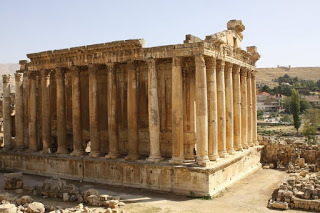
509 BC The temple of Jupiter on Rome's Capitoline Hill was dedicated on the ides of September.
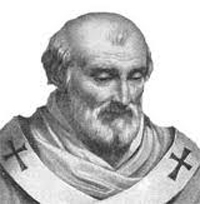
1159 Alexander III was crowned Roman Catholic pope. He is noted for laying the foundation stone for the Notre Dame de Paris.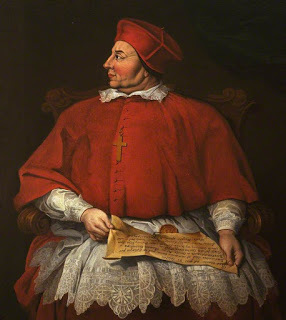
1514 Thomas Wolsey was appointed archbishop of York, the second most important seat in England. His failure to obtain an annulment of Henry VIII's marriage to Catherine of Aragon led to his downfall. He built Hampton Court Palace, which Henry VIII coveted and acquired, and was one of Henry's favorite residences.
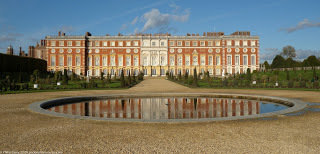

509 BC The temple of Jupiter on Rome's Capitoline Hill was dedicated on the ides of September.

1159 Alexander III was crowned Roman Catholic pope. He is noted for laying the foundation stone for the Notre Dame de Paris.

1514 Thomas Wolsey was appointed archbishop of York, the second most important seat in England. His failure to obtain an annulment of Henry VIII's marriage to Catherine of Aragon led to his downfall. He built Hampton Court Palace, which Henry VIII coveted and acquired, and was one of Henry's favorite residences.

Published on September 15, 2015 00:30
September 14, 2015
History Trivia - Domitian becomes Emperor of the Roman Empire
Sept 14
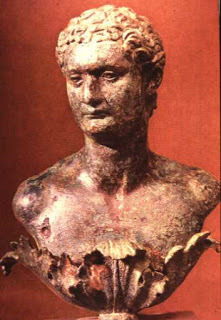
81 Domitian became Emperor of the Roman Empire upon the death of his brother Titus.
891 Pope Stephen V died. The pontificate of Stephen witnessed the disintegration of the Carolingian Empire.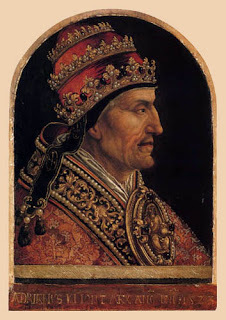
1523 Pope Adrian VI died. Adrian VI was the only Dutch pope, and the last non-Italian pope to be elected until Pope John Paul II in the twentieth century.

81 Domitian became Emperor of the Roman Empire upon the death of his brother Titus.

891 Pope Stephen V died. The pontificate of Stephen witnessed the disintegration of the Carolingian Empire.

1523 Pope Adrian VI died. Adrian VI was the only Dutch pope, and the last non-Italian pope to be elected until Pope John Paul II in the twentieth century.
Published on September 14, 2015 01:00



